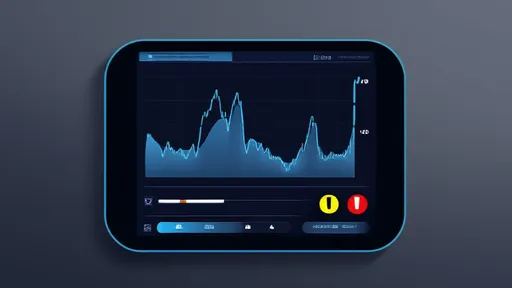The foreign exchange market is a dynamic and ever-changing landscape, where currency values fluctuate based on a myriad of economic, political, and social factors. For businesses, investors, and even individuals engaged in international transactions, keeping track of these fluctuations is crucial. One of the most effective tools to manage this volatility is setting up exchange rate alerts with threshold notifications. These alerts act as a financial safeguard, ensuring that stakeholders are promptly informed when exchange rates hit predefined levels, allowing them to make timely and informed decisions.
Exchange rate volatility can significantly impact profitability, especially for businesses that rely on cross-border trade. A sudden depreciation or appreciation of a currency can erode profit margins or create unexpected costs. For instance, an importer paying for goods in a foreign currency may find their expenses skyrocketing if the domestic currency weakens unexpectedly. Conversely, an exporter might lose competitive pricing advantages if the domestic currency strengthens. By setting customizable threshold alerts, businesses can mitigate these risks by locking in favorable rates or delaying transactions until conditions improve.
Threshold alerts are not just for corporations; individual investors and travelers can also benefit. A family planning an overseas vacation might set an alert to notify them when the exchange rate reaches a level that makes their travel budget more favorable. Similarly, a freelance professional receiving payments in foreign currencies can use these alerts to optimize withdrawal timings, maximizing their earnings. The flexibility of these tools allows users to tailor alerts to their specific needs, whether they are tracking minor fluctuations or waiting for significant market movements.
The mechanics behind these alerts are relatively straightforward but highly effective. Most financial platforms and currency exchange services offer the option to set upper and lower limits for exchange rates. When the market rate crosses these thresholds, the system triggers a notification via email, SMS, or app alerts. This real-time feedback loop ensures that users are always aware of critical changes, eliminating the need for constant manual monitoring. Advanced platforms even provide historical data and trend analysis, helping users make more informed decisions about where to set their thresholds.
However, setting the right thresholds requires a nuanced understanding of market behavior. Overly sensitive thresholds might result in a barrage of notifications, leading to alert fatigue, while overly broad thresholds might cause users to miss crucial opportunities. Striking the right balance involves analyzing past volatility, understanding upcoming economic events (like central bank announcements or geopolitical developments), and aligning alerts with financial goals. Some platforms offer predictive analytics, using machine learning to suggest optimal threshold levels based on user behavior and market trends.
Another critical consideration is the source of exchange rate data. Not all providers offer the same level of accuracy or update frequency. Interbank rates, for example, are often more precise than retail rates, but they may not always be accessible to individual users. Ensuring that alerts are based on reliable and timely data is essential for their effectiveness. Users should also be aware of any latency in notifications, as even a slight delay can make a significant difference in fast-moving markets.
Beyond the technical aspects, the psychological impact of threshold alerts cannot be overlooked. The foreign exchange market is inherently unpredictable, and the stress of monitoring it can be overwhelming. Automated alerts provide peace of mind, allowing users to focus on other aspects of their business or personal lives without the constant worry of missing a critical rate movement. This psychological benefit is particularly valuable for small business owners or solo entrepreneurs who may not have dedicated financial teams to monitor the markets.
Looking ahead, the integration of artificial intelligence and blockchain technology is poised to revolutionize exchange rate alerts. AI can enhance predictive capabilities, offering more accurate and personalized threshold suggestions. Blockchain, with its transparent and immutable ledger, could provide even more reliable and tamper-proof exchange rate data. These advancements will further empower users to navigate the complexities of the forex market with confidence.
In conclusion, exchange rate threshold alerts are an indispensable tool in today’s interconnected global economy. They provide a proactive approach to managing currency risk, offering both financial and psychological benefits. Whether for a multinational corporation or an individual traveler, these alerts ensure that no one is caught off guard by sudden market movements. As technology continues to evolve, the sophistication and accessibility of these tools will only improve, making them an even more vital component of financial planning and decision-making.

By /Aug 4, 2025

By /Aug 4, 2025

By /Aug 4, 2025

By /Aug 4, 2025

By /Aug 4, 2025

By /Aug 4, 2025

By /Aug 4, 2025

By /Aug 4, 2025

By /Aug 4, 2025

By /Aug 4, 2025

By /Aug 4, 2025

By /Aug 4, 2025

By /Aug 4, 2025

By /Aug 4, 2025

By /Aug 4, 2025

By /Aug 4, 2025

By /Aug 4, 2025

By /Aug 4, 2025

By /Aug 4, 2025

By /Aug 4, 2025